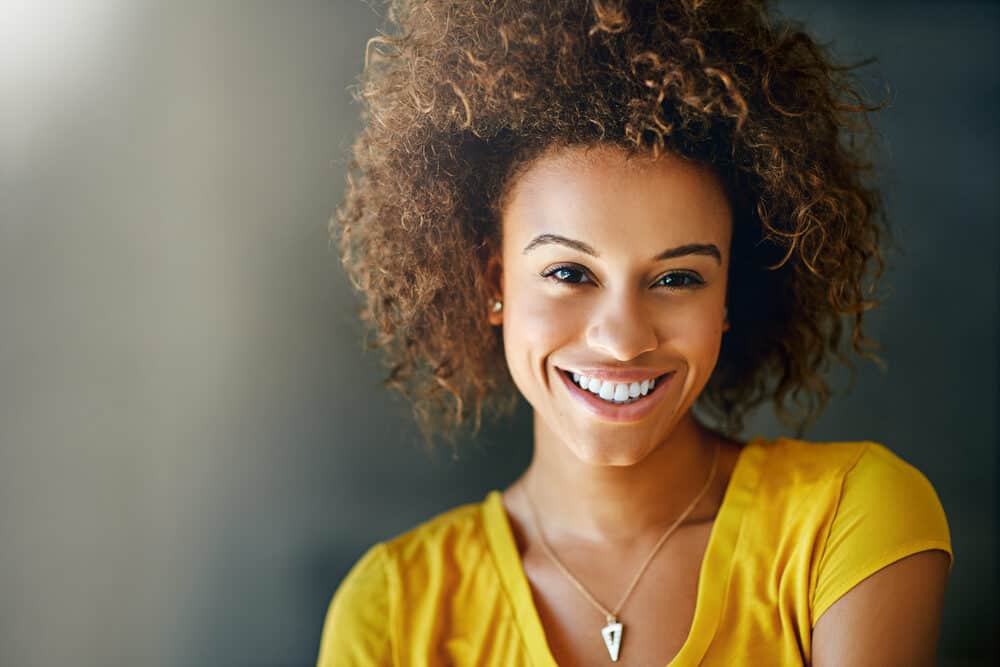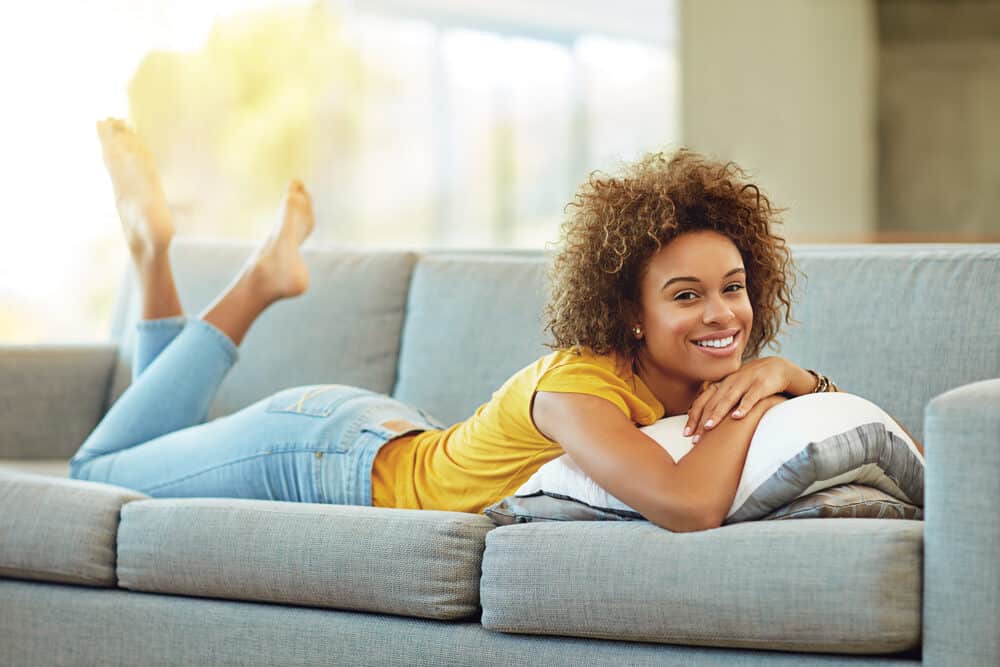
Hair dyeing has been an important part of beauty routines and self-expression around the world for quite some time. But for inquisitive minds like yours, “quite some time” isn’t sufficient.
You want to know specifics, and we’ve got them for you. If you're curious about exactly when hair dye was invented, you’re in the right place.
In this article, we’ll tell you exactly when hair dye was invented and highlight just how far it’s come over the years!
Table of Contents
When Was Hair Dye Invented?
Hair coloring has been around since the time of cavemen. There is evidence that even the earliest people used naturally occurring pigments to change their natural hair color. However, hair dye and hair colorants as we know them today came about centuries later. The first commercial hair dye was created in 1907.

The History of Hair Dye: First Modern Hair Color
The journey of modern hair dye began with the invention of synthetic hair dye. The first synthetic dye was an accidental discovery by an English scientist named William Henry Perkin.
Perkin was working with coal tar, attempting to find a cure for malaria. After a failed experiment, he began to clean his flask with alcohol.
When alcohol was added to the solution, it turned an intense shade of mauve. Perkin, who was interested in painting, was immediately interested in commercializing this new pinkish-purple colorant.
He quickly scaled up production and began selling the new dye under the name Mauveine. In 1854, August Wilhelm von Hofmann further refined this mauve dye into para-phenylenediamine (PPD).
PPD is a color-changing molecule that leaves your hair with natural-looking, enduring color. PPD is so effective that it is still a staple in the formula of many modern permanent hair dyes today.
In 1907, Eugene Schueller used PPD as the basis for the first commercial hair dye, Aureole. Eventually, Aureole became known as the brand L'Oreal.

The Evolution of Hair Dye
Now that we've explored the beginnings of modern hair dye, it's time to dive into its ancient history. In the following section, we'll break down the progression of hair dye from the first instances to modern dye kits.
10,000 B.C.
There is archeological evidence suggesting early cave people made a crude version of paint by mixing binding ingredients like saliva or animal fat with charcoal or dirt rich in iron oxide.
Iron oxide has a reddish-brown color, like the tone seen in early cave paintings. Early humans decorated themselves by rubbing these mixtures into their hair and skin.
3,000 B.C.
Ancient Egyptians were among the first civilizations to master the art of hair coloring. They colored both their natural tresses and wigs made from human or animal hair.
Ancient Egyptian hair dye was unique in that it both coated and partially penetrated the hair's cuticle. This left them with semi-permanent tints that could be built up over time for permanent hair color.
A youthful black or dark brown was likely the most desired shade in ancient Egypt.
They used pigment-rich botanicals like henna and juniper berries to achieve these dark, natural tones. Some ancient Egyptians even turned to magic to ward off gray hair!
500 B.C.
Hair samples from ancient Roman and Greek human remains show evidence of hair dye. Scientists believe ancient Greeks and Romans used a combination of calcium hydroxide and lead oxide to permanently color their locks.
However, this mixture is highly toxic, so they eventually switched to a version of dye created by fermenting leeches or crushing earthworms.
The first well-documented cases of hair lightening took place in ancient Rome.
Prostitutes were required to have yellow hair to distinguish them from the general population. While most wore wigs to conform to the law, some turned to the sun to lighten their hair.

The 1700s-1800s
In the 1700s and 1800s, plant-based dyes like indigo, henna, saffron, and walnut hulls were popular temporary coloring solutions. They were safe and effective, but the color washed away quickly.
Also, around this time, women in Italy would saturate their hair with a potent blend of sulfuric acid, called Oil of Vitriol. Once activated by the heat and U.V. radiation in sunlight, the solution would lighten even the darkest locks.
After William Henry Perkin's accidental discovery of Mauveine, hair dye began to move away from its plant-based origins.
Before his discovery, dyes were painstakingly extracted from natural sources. They were expensive to make, which limited their accessibility.
Once PPD was discovered, chemists started creating dyes in a wider variety of shades. They began experimenting with different formulas, and hair coloring officially became a big business. The emphasis was still on all over, natural-looking color and gray coverage.
The Early 1900's
During the 20th century, the formula for commercial hair dyes continued to improve. In 1932, a chemist named Lawrence Gelb created the first permanent hair dye, Clairol.
This product was unique, as it was the first commercial hair dye to penetrate the hair shaft and deposit color inside of the strand.
As the Golden Age of movies hit, big-screen celebrities began to spark new hair coloring trends. Jean Harlow stunned audiences with her platinum blonde do and set off a centuries-long obsession with peroxide blondes.
Although she never admitted to it, Jean Harlow's hairdresser eventually revealed the secret to her bleach blond tresses.
Harlow would coat her hair in a mixture of household bleach, ammonia, and soap flakes.
This caustic treatment damaged her hair beyond repair and potentially contributed to her untimely death. Despite its damaging effects on their health, hair bleaching remained a popular beauty staple.

The Mid-to-Late 1900s
In 1947, the first at-home hair coloring dye, Poly Color, was launched by the German cosmetic company Schwarzkopf.
This revolutionary product allowed men and women to safely color their hair from the privacy of their own homes.
At the time, people were still secretive about dyeing their hair. Customers were ecstatic at having the chance to color their hair away from prying eyes.
It wasn't until the 1950s that single-step coloring hit the market. Lawrence Gelb introduced a new, one-step treatment that lightened and colored hair without the need for harsh bleach.
Over the next few decades, the formulas for hair dye became longer-lasting and more effective.
In previous years, hair coloring was centered on discretion. In the 1970s, however, there was a marked culture shift. Hair dyeing was no longer something you had to do in secret, and as a result, bold color took over.
The trend continued well into the 1980s and 1990s, and these decades were defined by head-turning shades and coloring techniques like frosted tips and highlights.

Hair Dyes Today
In the 2000s, coloring techniques like highlights, balayage, and ombre have made placement just as important as color.
Additionally, hair coloring is no longer limited to natural shades. There are electric greens and blues, stunning rose golds, and vivid neon pinks. There are even UV-reactive dyes that glow under black light!
Modern hair dyes are undoubtedly more effective than their ancient counterparts. They last longer, are gentler on your hair and produce more consistent results.
Unfortunately, there is still speculation over the safety of today's hair dye formulas. Many brands continue to use damaging ingredients like PPD, resorcinol, metallic salts, and ammonia.
Worryingly, the negative effects aren't just limited to your hair. Some of these ingredients have been linked to serious health risks, like cancer and endocrine disruption. But as time progresses, consumer expectations change.
Customers have been demanding cleaner formulas that get away from the coal tar origins of commercial dye. Regardless, more people than ever are experimenting with hair color, both inside and outside of the salon.
- How To Stop Hair Dye From Bleeding Onto Clothes
- Should I Dye My Hair at Home or Go to a Salon?
- Can You Dye Your Hair While Wet?
- How Long To Leave Box Hair Dye In
We hope this article has helped shed some light on how hair dye has transformed over the centuries. From boiled nuts and berries to do-it-yourself bleaching kits, hair coloring has really come a long way!




